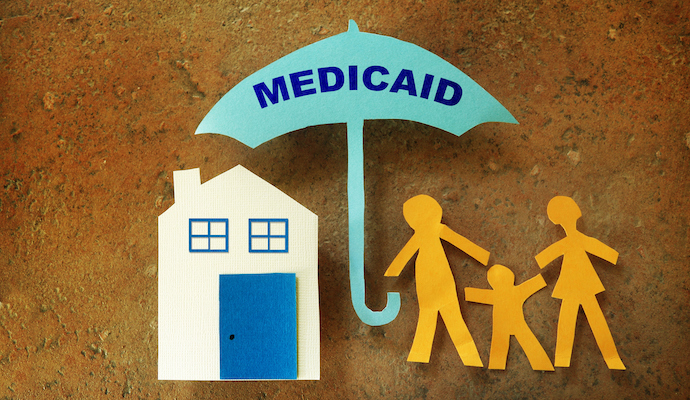ACA Medicaid Expansion Increases Young Adult Coverage, Health Equity
Underserved adults ages 19 to 25 benefited most from Medicaid expansion, showing how public insurance can promote health equity and care access.

Source: Getty Images
- Medicaid expansion is responsible for a significant decline in uninsurance rates between 2011 and 2018 among young adults, especially those who faced social determinants of health, according to a new report from the Urban Institute that shows how programs under the Affordable Care Act can improve health equity.
Overall, uninsurance rates among adults ages 19 to 25 dropped by half during the study’s time frame (from 25 percent in 2011 to 15 percent in 2018). While uninsurance rates declined among young adults in every state, states that expanded Medicaid under the 2010 ACA passage saw the greatest improvement in coverage.
The researchers determined that ACA Medicaid expansion is associated with an overall 13.7 percent decline in uninsurance among young adults from 2011 to 2018.
Medicaid expansion successfully targeted health disparities, as the program was associated with larger decreases in uninsurance among groups that had high uninsurance rates before the passage of the ACA. These groups include Hispanic and non-Hispanic Black young adults, young adults ages 22 to 25 without a college degree, and young adults in low-income households.
For young adults in low-income households and young adults with lower educational attainment, Medicaid expansion was also associated with an increased likelihood of having a personal doctor.
Additionally, researchers found that Medicaid expansion was associated with a large decrease in the likelihood of delaying care in the past year due to cost among non-Hispanic Black young adults.
These findings show that Medicaid expansion can successfully mitigate health disparities among groups that face various social determinants of health as the industry strives for health equity.
Before the passage of the ACA, young adults ages 19 to 25 had the highest rates of uninsurance among all age groups. These new findings from the Urban Institute suggest that Medicaid expansion in additional states could help provide access to care and coverage to an age group that has historically had limited access to insurance, whether it is employer sponsored or public.
While the data shows improvement in health coverage for young adults following the ACA, 20.9 percent of young adults in nonexpansion states and 11.3 percent of young adults in expansion states were still uninsured in 2018.
The report also found that fewer than 60 percent of young adults received a checkup in the previous year or had a personal doctor, slightly more than one in four received a flu vaccine, and between 14 and 19 percent reported delaying care in the past year due to cost.
These statistics show that more needs to be done in order to reduce uninsurance for this age group, the report authors noted.
Another January Urban Institute study found that if the 14 states that have not expanded their Medicaid programs had decided to pursue Medicaid expansion in 2020, they could have helped reduce uninsurance during the pandemic by providing coverage to 4.4 million people.
“A growing body of literature shows Medicaid expansion has benefits beyond increasing health coverage, such as saving lives and increasing financial security,” the authors pointed out in the January report.
“Expanded Medicaid eligibility has also resulted in net savings to many of the states that have expanded, which is even more important now given the strain the pandemic has placed on state and local budgets. And because states that have recently expanded Medicaid have often done so relatively quickly, it is not too late to expand eligibility during this time of increased need,” they continued.
Uninsurance among young adults would have dropped by 45.8 percent if these 14 states had expanded Medicaid eligibility. According to the study, the impact would be the greatest in Alabama and Mississippi, with uninsurance dropping 59.7 percent and 57.2 percent, respectively.
Texas, the state with the highest uninsurance rate, could have seen a 24.6 percent decrease in uninsurance if it had expanded its Medicaid program in 2020.
